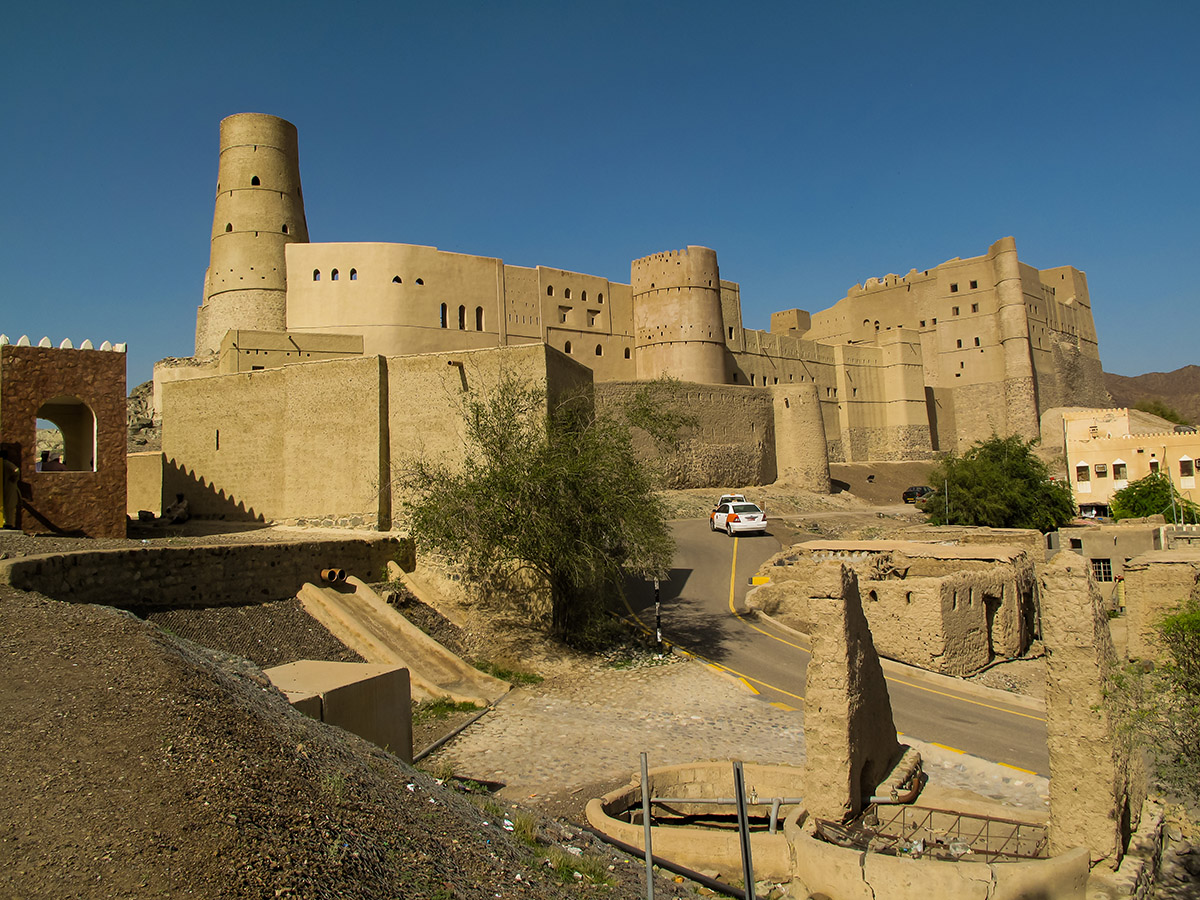Submitted by Ashish Batra
Five UNESCO World Heritage Sites that need to be seen In Oman
Oman Architecture News - Jul 26, 2018 - 04:31 38211 views

There are five UNESCO World Heritage Sites in Oman. All of these sites are of cultural significance, the list of which is given below:
- Bahla Fort (listed with UNESCO in 1987)
- Archaeological Sites of Bat, Al-Khutm and Al-Ayn (listed with UNESCO in 1988)
- Land of Frankincense (listed with UNESCO in 2000)
- Aflaj Irrigation Systems of Oman (listed with UNESCO in 2006)
- Ancient City of Qalhat (listed with UNESCO in 2018)
1. Bahla Fort
The Bahla Fort is a monumental and immense fort that was built for by the tribe of Banu Nebhan during the peak of its power (maybe from the 12th to the 15th centuries). Currently, the remaining of the fort includes the main walls, towers, and maximum of its stone foundation. Archaeological experts consider this of important cultural significance to the region in Gulf. It is believed to be one of the best examples of a fortification in the region that attests to the power of the Tribes.

Bahla Fort. Image courtesy of Wikimedia
Bahla Fort is a fascinating structure of walls and towers built of mud brick laid on stone foundations. The monument is a historical fortress situated in Djebel Akhdar highlands located in the Omani deserts. The great sur-wall had sentry walks, numerous watchtowers all around the labyrinth mud fortress, cultivated lands, and several gateways. The oasis was watered by wells and underground channels using the Aflaj system. Bahla Fort is an outstanding monument of a fortified oasis settlement dating back to the medieval Islamic era, which used the Aflaj system for domestic and agricultural purposes. UNESCO declared this fort as a cultural world heritage site in 1987.
2. Archaeological Sites of Bat, Al-Khutm and Al-Ayn
These sites are considered as the best example of ancient settlements in Oman and necropolises that long back around 3rd millennium BC. The whole archaeological complex/area consists of a large rural settlement, a monumental tower, few necropolises, and an irrigation system for agriculture. The remains of this Bronze Age landscape are of an exceptional value for preservation. By including it in the list of UNESCO World Heritage Sites in Oman, the researchers and government hope that they will be able to protect this cultural beauty.

Archaeological Sites of Bat, Al-Khutm and Al-Ayn (Oman). Image © UNESCO
3. Land of Frankincense
The Land of Frankincense was listed as one of the UNESCO World Heritage Sites in Oman in the year 2000. It is an area along the incense road in Oman that features frankincense trees. Before petroleum and Gas, the trade of frankincense in the Gulf region brought about success to the economy and this went on for many centuries. In fact, the trade of frankincense was considered as one of the most important trading activities in the medieval and ancient times.

Land of Frankincense. Image courtesy of Times of Oman
Artefacts from Ming, China, and the world beyond portray the fortress as an important harbor in the Silk Road to the Sea where frankincense was also traded. In the 15th century, the Portuguese and the European countries changed the trading patterns and soon the fortress died. The Omani Royal Decree No. 6/80 protects this site. There is a fence enclosing the site and all buffer zones.
4. Aflaj Irrigation Systems of Oman
This UNESCO site consists of five irrigation systems that showcase the traditional irrigation method of Omanis from long back centuries. This UNESCO site is also listed of cultural significance under in Oman as it is used to distribute water for irrigation and other purposes using gravity. The water flows through these systems, is still utilized by Omani people for agricultural use, as well as for some domestic use in various regions of Oman.

Aflaj Irrigation System in Oman. Image Courtesy of Adventure Philes
The UNESCO listing has five Aflaj irrigation schemes, representing about 3000 similar systems still in use in Oman. Archaeological evidences, suggests that the ancient irrigation systems existed in Oman as early as 2500 BC. The water flowed from the underground sources or natural springs to croplands and homes through the use of gravity. There are also numerous watchtowers built in between to protect the water systems. UNESCO declared this irrigation scheme a World Heritage Site in 2006. Now a day the main threat facing these cultural sits is the falling level of underground water.
5. Ancient City of Qalhat
Recently in July 2018, the ancient city of Qalhat located between Shab and the main city of Sur in central region of Oman, has been in the list UNESCO world heritage sites. Very little remains of this ancient site exist. The only surviving structure is the dome-less mausoleum of Biwi Maryam. Covering more than 60 acres of area, this ancient city was surrounded by fortified walls which contain residences and shops. Artefacts from as far away as Persia and China were found on site. Its inclusion in the list of world heritage site, as the delegation of Oman has proposed, is because the ancient city of Qalhat stands as a unique testimony of cultural traditions and an ancient civilisation moreover it is an outstanding example for an early typical city port representing important stages in the history of mankind.

Dome-less mausoleum of Biwi Maryam in Ancient City of Qalhat. Image courtesy of Flickr/Rita Willaert
> via UNESCO